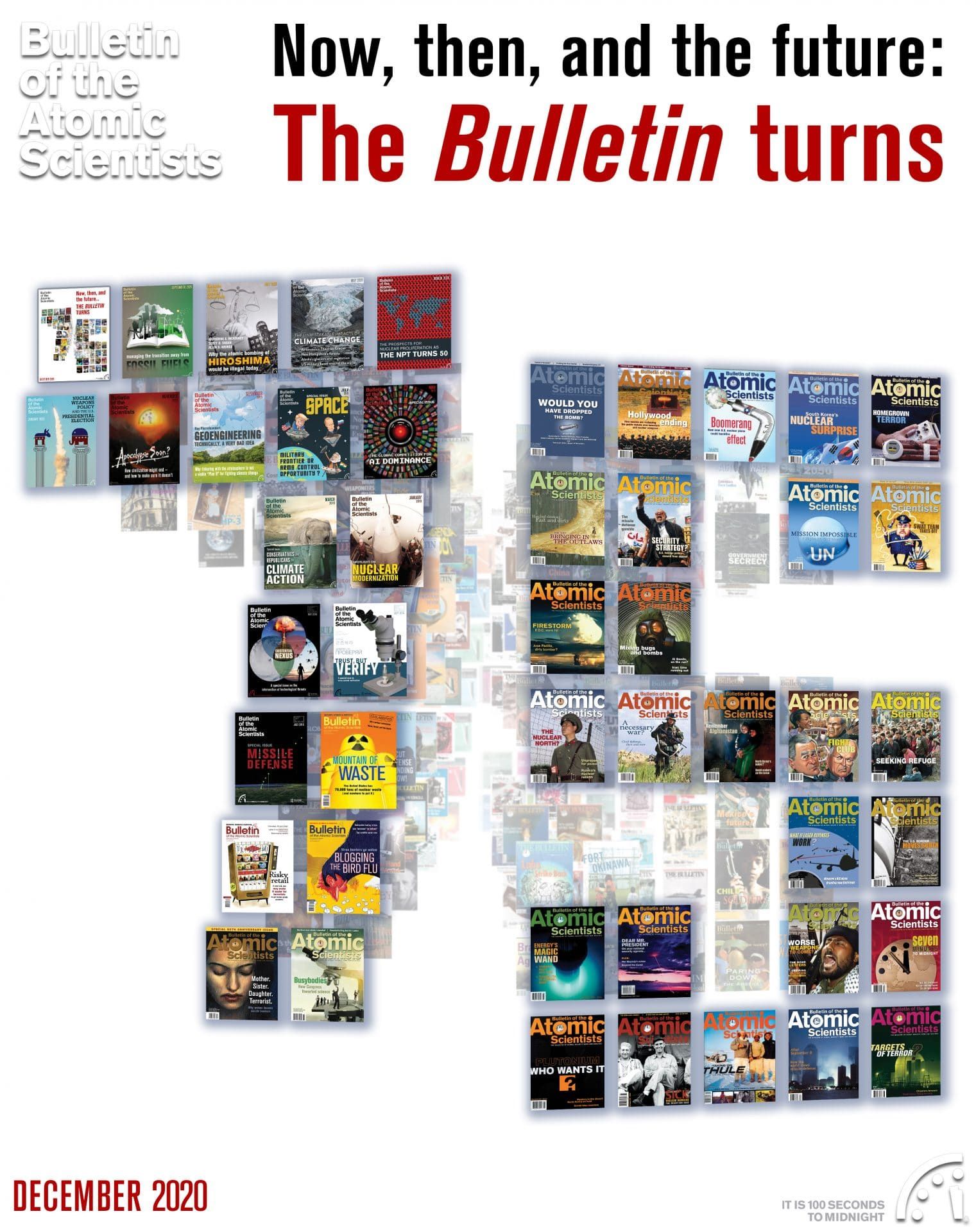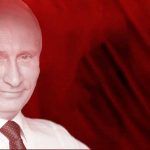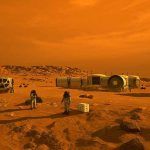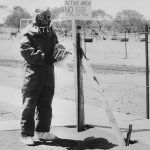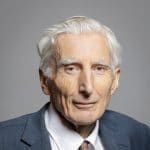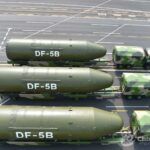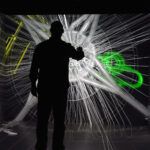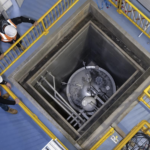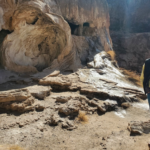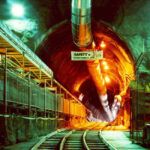Science diplomacy: The essential interdisciplinary approach
By Rose Gottemoeller | December 7, 2020
Science diplomacy: The essential interdisciplinary approach
By Rose Gottemoeller | December 7, 2020
“We shall try to say no single word which should appeal to one group rather than to another. All, equally, are in peril, and, if the peril is understood, there is hope that they may collectively avert it.” These words are from the Russell-Einstein Manifesto, which was published in 1955 and therefore, as the Bulletin celebrates 75th year, is celebrating its 65th. It was one of the first explicit calls for nuclear disarmament.
In 2005, I participated in a book project to celebrate the manifesto’s 50th anniversary.[1] The issues were much different then than they are today; written just a few years after 9/11, my essay focused on the threat of nuclear terrorism and countered the unwarranted arguments of those who wanted to use low-yield weapons to go after bunkers where nuclear terrorists may be hiding.
But that is not my purpose in writing now. I want to talk about the manifesto as the starter’s gun for a long period of science diplomacy that laid the foundations for our successful record of nuclear diplomacy. The manifesto led to the first Pugwash conference, and that movement was joined later by the Dartmouth Conference and the Committee on International Security and Arms Control of the National Academy of Sciences.
These are prominent examples of venues where scientists have gathered, first with their Soviet counterparts, later with Russians, Chinese, Indians, and others, to talk about how to limit and control nuclear weapons. Science diplomacy is rooted in unparalleled scientific and technical expertise—but that is not enough. There must be an interdisciplinary angle. Bertrand Russell was the most prominent philosopher of his age, and he teamed up with Albert Einstein, the most prominent physicist of his age, to create their manifesto. Multiple scientific disciplines must be part of the mix, too: If you read through the list of manifesto signatories, they include a chemist and zoologist, in addition to physicists.
I have seen science diplomacy at work, both in government and outside, on the “second track.” I am not a scientist, but a policy expert and, in later years, a diplomat. Always, from my point of view, success came in an interdisciplinary setting. At the same time, I must sound the alarm that interdisciplinary science diplomacy is languishing. In Russia, the free rein that even the Soviet government gave to discourse between scientists has become more constrained. The interactions in the 1960s with giants of the Soviet nuclear program such as Andrei Sakharov are unheard of today. Limits are placed even on the retired nuclear scientists who have traditionally been at the heart of discussions of what might be possible in international efforts to constrain nuclear arms.
With China, nuclear scientists are still able to interact with foreign counterparts, and even younger scientists are coming to the table, a welcome phenomenon. However, here the political mood between China and the United States constrains free discourse, with only certain topics fair game for discussion. Because China has had pressure from the United States to come to the nuclear negotiating table, wide-ranging efforts to explore ideas with Chinese colleagues have also become more constrained—with constraints sometimes coming from both directions.
The effect? The help that science diplomacy might lend to policy-makers to shape nuclear initiatives, whether in China, Russia, or the United States, has lessened. I therefore also want to use this essay to sound an alarm. Interdisciplinary efforts by scientists have shaped successful nuclear initiatives both in and out of government, but to succeed in avoiding catastrophe in future, scientists must be allowed to interact with their peers not only in other national organizations, but also in other countries. My past experience illustrates why this is so important:
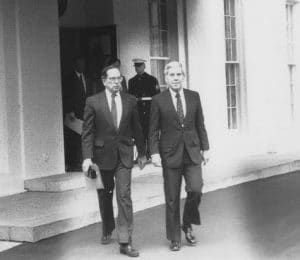
My first example began in academia but moved quickly into government: the threat reduction programs of the 1990s and early 2000s. Under these programs, Americans were able to work with scientists from the Russian Federation, Kazakhstan, Ukraine, and other newly independent states to ensure that weapons of mass destruction—chemical, biological, and nuclear—from the Soviet arsenal did not get into the wrong hands as and after the USSR dissolved.
In 1993, I was a newly minted political appointee for President Clinton. Sig Hecker, then director of the Los Alamos National Laboratory, came to my office in the Old Executive Office Building to tell me about work that had already begun with former Soviet weapon scientists. The US weapon laboratories—Los Alamos, Livermore, and Sandia—were working with Russian counterparts to figure out how to ensure that fissile materials did not get into the wrong hands. Sig painted a dire picture that drained the blood from my face. We had to get moving, and fast.
Luckily, a number of people had already been thinking about the problem, especially Ash Carter and his team at Harvard University. We had excellent support from senators Sam Nunn and Richard Lugar on Capitol Hill, and from Congressman Les Aspin, who was soon to become Secretary of Defense. Once Aspin finished his tenure, Bill Perry took over as defense secretary and worked with the same determination to ensure that the breakup of the Soviet arsenal would not result in a black-market free-for-all, with weapon components and materials being sold to the highest bidder.
Before too long, we had firmer funding from the Defense Department and later the Energy Department and were able to do much to secure former facilities. From the bioweapons production plant at Stepnogorsk in Kazakhstan to the plutonium storage sites in the Urals to naval nuclear facilities in the Northern Fleet, the projects were urgent and many. And the US national laboratories—all of them, not just the weapons labs—stepped forward to make a huge contribution.
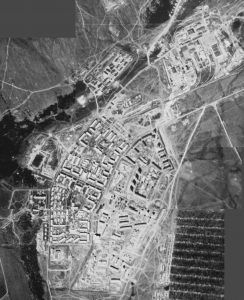
However, the labs could not have done it alone. Just consider the team that succeeded in covertly removing more than a half-ton of weapons-grade highly enriched uranium (HEU) from Kazakhstan in 1994 in what was called Project Sapphire.[2] Multiple labs were involved, including the fissile material experts from Oak Ridge and nuclear engineers from Sandia.
But there were many angles on “interdisciplinary” in that project, too: The politicians had to be involved, because the Clinton White House wanted to bring the material to Tennessee. I will never forget a successful call that Vice President Al Gore made to Gov. Ned McWherter to convince him not to object to the transport of the material. Both of them being Tennessee men and fellow Democrats, they made sense to each other. Diplomats and lawyers had to be involved, to get the agreement of the Russian Federation to remove what the Russians may have considered their property, even though Kazakhstan was independent by then, and to work through every legal angle with the Kazakh government. The Defense Department had to be involved, because military transports were required to move the stuff. At the end of the day, I chaired a tiger team at the Old Executive Office Building to ensure that everybody in the interagency was doing what they needed to do on a day-in, day-out basis. That was when I first became fully aware of the importance of the Energy Department and the national laboratories to US nuclear diplomacy.
The delegation that negotiated New START in 2009 and 2010 was also interdisciplinary, including representatives from across the US interagency—more than 70 people from the departments of State, Energy, and Defense, the intelligence community, and the laboratories. We needed not only diplomats, but also people who had been weapon system operators and inspectors on previous nuclear arms control treaties, especially START. In fact, their expertise was crucial to being able to move quickly in the New START negotiations.
These experts also proved to be natural diplomats who could speak the right technical language to their Russian counterparts and quickly gain their understanding of what we were trying to accomplish—or fairly quickly, anyway. Some issues were slow and frustrating, but that is just the way negotiations go. Anyway, I always say that if it were not for our inspectors and weapon system operators, we would not have gotten New START done in a single year. By comparison, START took over six years, on and off, to complete.
The people from the national labs brought special knowledge and understanding of some key issues that had to be resolved before we could get to “yes.” Telemetry is probably the most important example. Kurt Siemon was the senior Energy Department representative to the negotiations, and I was very glad to have him. Kurt and I had served together on the START delegation in 1990-91, when he was still in Army uniform, and I was a very green and junior advisor from the State Department.
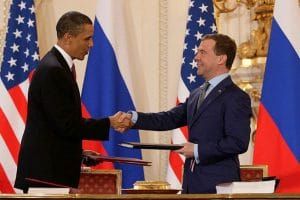
Kurt’s experience was crucial to the success, 20 years later, of the New START negotiations. He always was clear that he needed technical expertise to get what he needed at the negotiating table and so brought experts from the Lawrence Livermore and Sandia Labs and elsewhere, to work with him in Geneva on the telemetry problem. Telemetry data is not needed in New START in the same way that it was needed in START—that is, to confirm the number of warheads on delivery vehicles. And the Russians fiercely resisted including the sharing of telemetry in New START.
Having a telemetry exchange as a confidence-building measure was, however, a crucial political requirement for the success of the New START ratification process in the US Senate. So sometimes science, technology, diplomacy, and politics become inextricably linked. Come to think of it, not sometimes, but many times.
I would like to say one last thing about New START: Negotiating a complex nuclear arms control treaty cannot be done on a drive-by basis. A two-day visit to Vienna or Geneva is not going to do it. You need sustained effort over a long period of time, and you need a dedicated delegation that stays in place to keep up the effort. As Jim Timbie, our wisest head on these matters, has said, “Arms agreements are the result of hard work by people on a mission.” The New START delegation was certainly on a mission, and I am forever grateful to those who were on that interagency and interdisciplinary team.
I know science diplomacy today on the outside, on the second track, as a member of the National Academy of Sciences’ Committee on International Security and Arms Control. This committee has been in existence since 1983, and I have been honored to serve on it with great scientists such as Pief Panofsky and Dick Garwin. Today I serve there with Jill Hruby, former director of the Sandia National Lab, which is a great pleasure as well as an honor.
There has been a fundamental change this year in science diplomacy as a result of the COVID-19 pandemic, and that is the advent of virtual meetings. We have all experienced them—perhaps to the point of exhaustion—but I think virtual meetings will be a determinant of the future success of science diplomacy.
For interactions with our Russian and Chinese counterparts, going virtual has provided the advantage of frequent meetings. We had grown accustomed over the years to meeting once or perhaps twice a year, in capitals or third-country locations. Intersessional work took place, but it was hampered by communication problems, even after email came into existence. Now we have frequent Zoom meetings and are able to develop work from one session to the next. We will see how long we can keep this up—Zoom fatigue is real—but I have found the virtual meetings to be an advantage during this period of great ferment, when we are considering the future of nuclear arms control.
Will New START be extended? Will we be able to begin a new negotiation on nuclear arms reductions that include limits on all warheads? Will we be able to get China to the table to join the conversation? What kind of new systems and technologies should be part of the equation? Although, as I noted, we have suffered certain constraints, we have also been able to talk about all of these topics with more or less focus in recent months.
The most surprising signal that I have gotten from the Russian experts, talking with them in several venues, is that they are willing to consider limits on warheads, including on tactical (or non-strategic) warheads. This has been the Holy Grail for nuclear arms control for a long time. We have controlled warheads through their association with delivery vehicles; once the delivery vehicles were destroyed and the warheads were removed, they were no longer considered a threat. Trying to control warheads directly was considered too sensitive a proposition, because the verification process would require monitoring in very sensitive nuclear weapons facilities.
Both the United States and Russia were not keen to go down that road, but both have also known that one day they would have to face the issue, as they tackled ever more ambitious goals at the negotiating table. These include constraining the potential to upload nuclear warheads on delivery vehicles and getting a better handle on weapon systems with both nuclear and conventional capabilities. At least in meetings I have attended, both sides have been willing to look at these issues and consider how we might go about monitoring and verifying constraints on warheads. Once again, these are track two meetings, and those who attend are not representing their governments. But the experts on both sides are knowledgeable about what their governments are doing, and they stay in touch with government experts.
That is the essence of science diplomacy conducted on the second track: We can offer our best advice, informed by what we hear from our foreign counterparts. Whether governments take the advice, of course, is not up to us, but we hope to be as useful to official processes as possible. I will say once again, however, that what produces effective policy in or out of government is an interdisciplinary approach.
In 2005, when the United States was still grappling with the immediacy of 9/11, I argued that we must continue to reduce and eliminate nuclear weapons and fissile material, or (here I quote myself) “we will, at some time and place we cannot predict, succumb to nuclear terror.”
I went on to underscore that Bertrand Russell and Albert Einstein made this point beautifully at the close of their manifesto, although they were warning against the threat of all-out nuclear war: “There lies before us, if we choose, continual progress in happiness, knowledge and wisdom. Shall we, instead, choose death, because we cannot forget our quarrels? We appeal, as human beings, to human beings: Remember your humanity, and forget the rest.”
Interdisciplinary science cooperation is at the heart of what has prevented nuclear catastrophe in so many instances in the 75 years since the atomic bomb was new and The Bulletin launched. We will need it over the next seven decades, and more. If we are to choose life over death, we need our scientists to be able to work together, across disciplines and across national boundaries.
Together, we make the world safer.
The Bulletin elevates expert voices above the noise. But as an independent nonprofit organization, our operations depend on the support of readers like you. Help us continue to deliver quality journalism that holds leaders accountable. Your support of our work at any level is important. In return, we promise our coverage will be understandable, influential, vigilant, solution-oriented, and fair-minded. Together we can make a difference.

